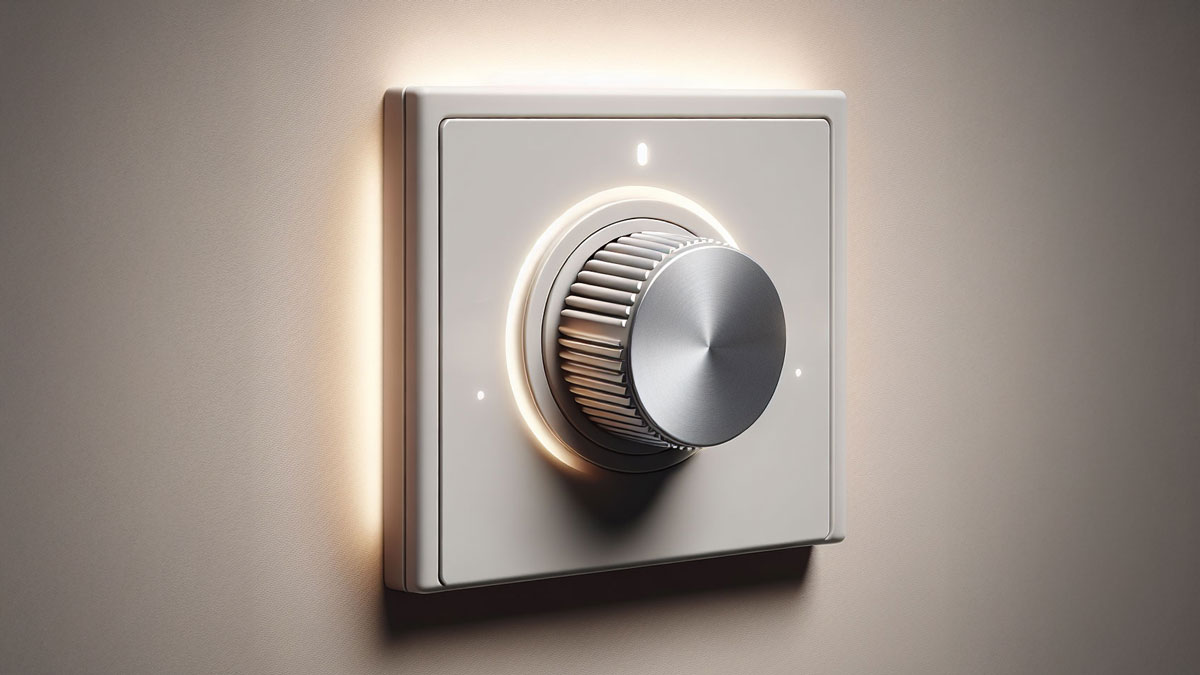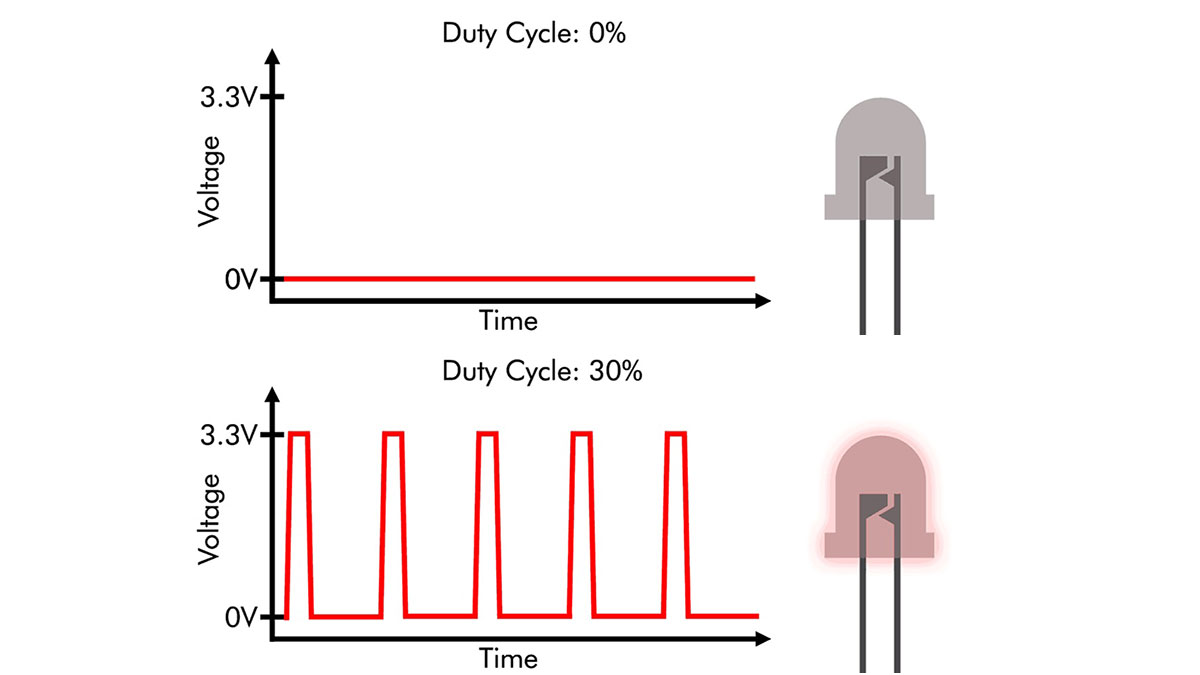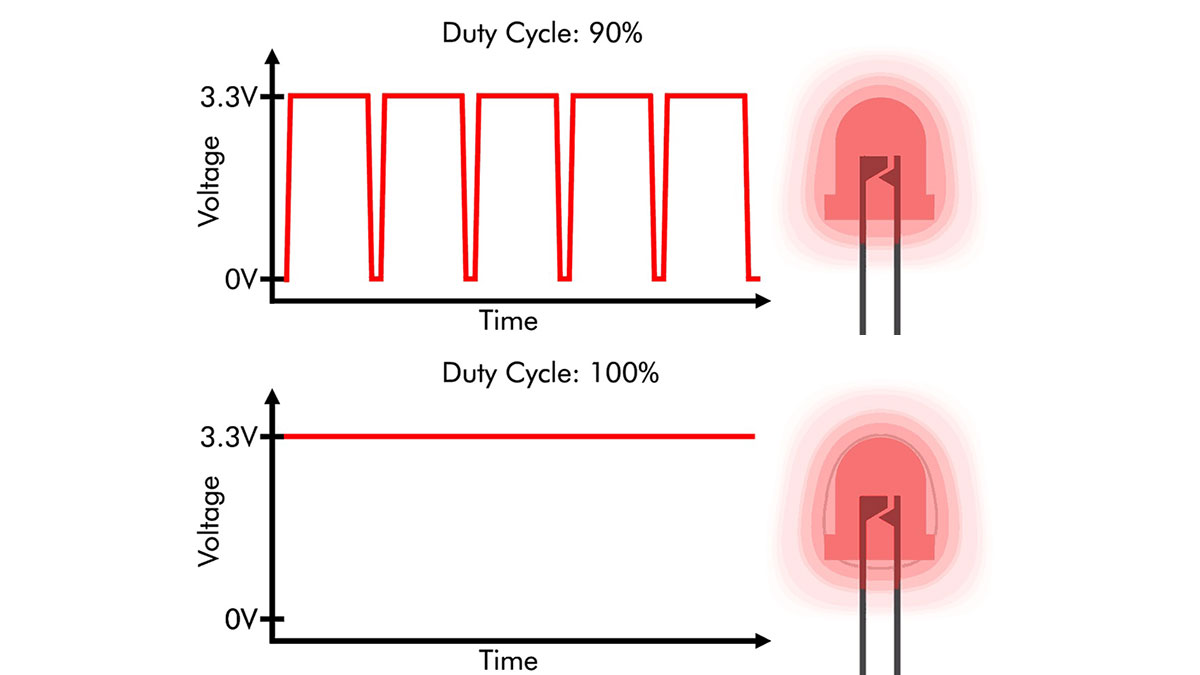
Dimming is the reduction of light output relative to the maximum level. For LEDs, this can be achieved using two main methods:
- Linear
- Pulse-Width Modulation (PWM)
Linear Method
This involves reducing the current flowing through the LEDs. The advantage of this method is the absence of electromagnetic interference for sensitive equipment. Therefore, the linear method is used in fixtures designed for installation in medical facilities, research laboratories, and high-precision manufacturing workshops.
A drawback of the linear method is that the light output's dependence on current varies for different types of LEDs and even for LEDs of the same type but from different batches. This affects the consistency of production results and requires additional work to configure each fixture. Another issue is that LEDs do not operate optimally when dimmed in this way, reducing the efficiency of the lighting device.
PWM (Pulse Width Modulation)
The principle of this method is as follows. Pulses of direct current with a single polarity and amplitude are passed through the LED. The amplitude corresponds to the optimal current value through the LED. The frequency is fixed, but the pulse width depends on the dimming level of the fixture. The wider the pulses, the greater the light output from the LEDs. Since the pulse frequency is usually several kilohertz, the human eye does not detect flickering. The light output level will be:

- Φmax is the maximum light output
- Ton is the interval when current flows through the LEDs
- Toff is the interval when it does not



LED Drivers with Dimming Function
LED drivers with a dimming function typically have a PWM input that receives control pulses modulated by frequency from an external controller. This controller receives signals from a control panel or a remote lighting control system. Some LED drivers have a built-in controller that generates PWM signals.
Compatibility with TRIAC Dimmers
Since the 1970s, so-called TRIAC dimmers have been widely used for dimming incandescent lamps. Their operation is based on cutting part of the voltage sine wave from the AC mains, thereby reducing the power supplied to the incandescent lamp.
In general, if the technical specifications of an LED lamp or fixture do not indicate compatibility with TRIAC dimmers, using such dimmers with them is unacceptable. There are specially designed LED fixtures and lamps that can work with TRIAC dimmers and some other types originally developed for incandescent lamps. These LED lamps or fixtures will only work properly with a recommended driver type. Ideally, the driver type and specific model should match those recommended by the lamp or fixture manufacturer.
However, even if your LED fixture (or lamp) is compatible with a TRIAC dimmer, the dimming range will be relatively small. The internal unit in the fixture (lamp) that integrates TRIAC and PWM is a complex and expensive device. Therefore, LED fixtures and lamps supporting TRIAC dimmers are used only when such a dimmer is already embedded in the wall, and rewiring would be costly.






